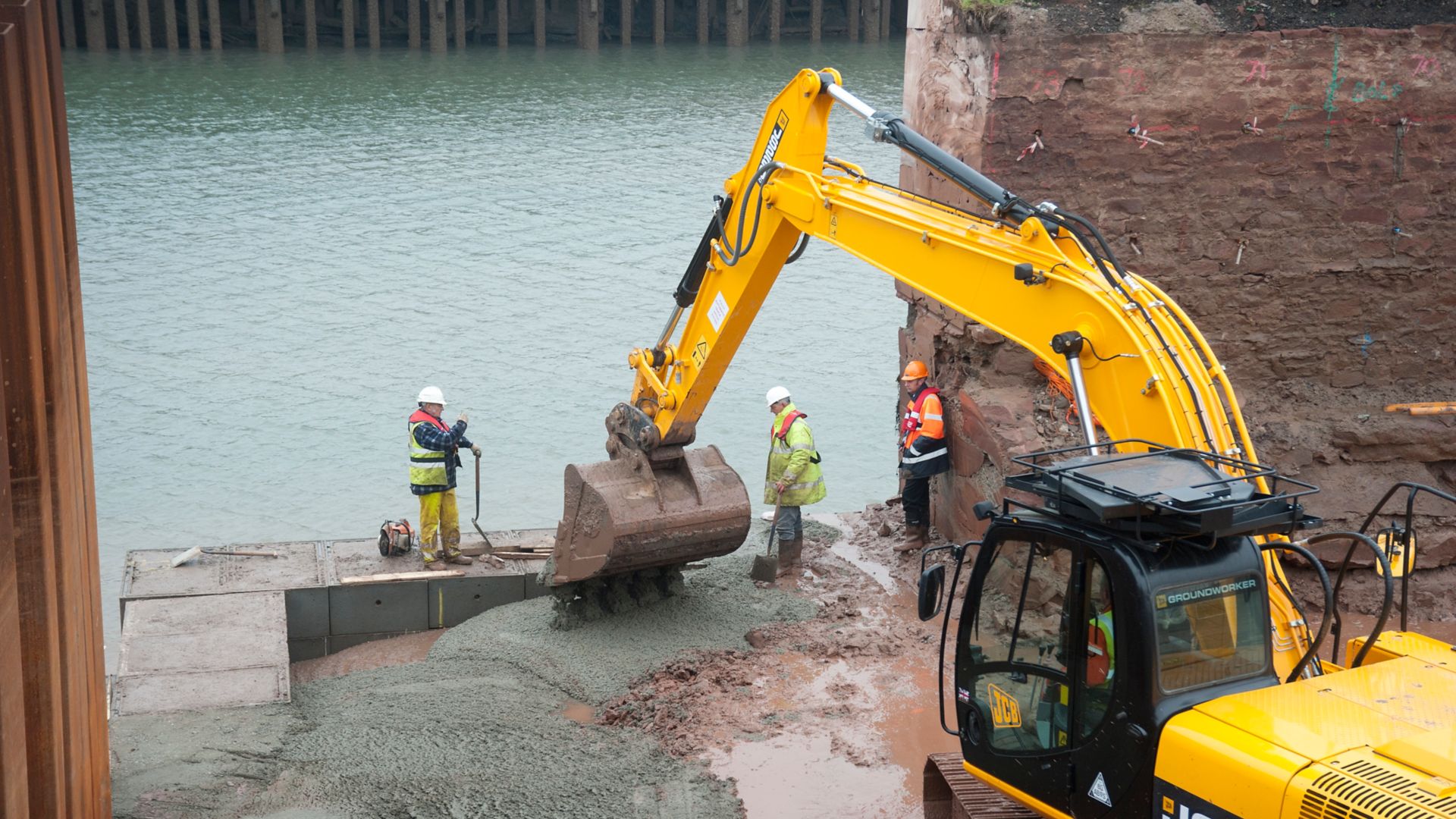What is Underwater Concrete?
As the name suggests, underwater concrete is installed below the water line and can be used for:
- Port and harbour installations
- Bridge piers in rivers
- Water industry structures
- Metro systems
- Deep shafts in unstable ground
Sika Underwater Concrete Admixture Solutions
Benefits of Sika® UCS Pak – Underwater Stabilizer
- Improves the cohesion
- Prevents the fines from leaching
- For use in still and especially flowing conditions (tidal situations)
Special requirements for underwater concrete
Standard method is pumping a suitably modified mix through a standard concrete pump. The end of the delivery pipe must be kept deep enough in the fresh concrete. Another method of placing underwater concrete with minimum loss is the tremie process (Contractor Method). The concrete is placed directly through a 20 – 40 cm diameter pipe into and through the concrete already installed. The pipe is raised continuously, but the bottom end must always remain sufficiently submerged in the concrete to prevent the water going back into the pipe.
Other important considerations of underwater concrete:
- As the flow rate of water increases, more leaching can occur, it is possible to design the concrete to minimize washout at various water flow rates
- Avoid pressure differences on the pipe (such as water level differences in shafts)
Composition (Example 0 – 32 mm):
Aggregate
- Use an aggregate suitable for pumped mixes
- Fines including cement > 400 kg/m3
Cement and Powder Additives
- Minimum cement content 350 kg/m3
- Limestone can be added to the fines content in the mix design
Admixtures
- Superplasticiser for the reduction of free water in the mix
- Mix stabiliser to minimise washout effect of fines and cement (especially in running water conditions)

